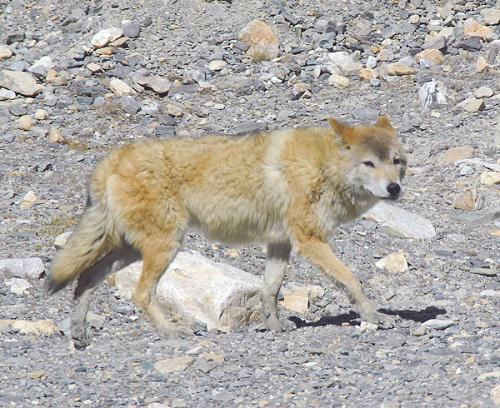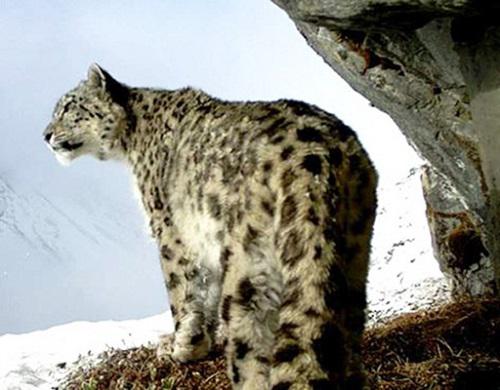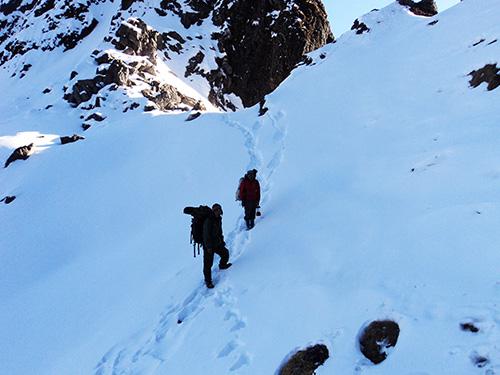Yonten Jamtsho
Advance our understanding of snow leopard ecology in terms of potential resource competition with wolf as well as conflict with local herders as caused by livestock depredation.

Tibetan Wolf.
Wangchuck Centennial National Park of Bhutan represents the eastern distributional range of snow leopards in the Himalayas and offers promising opportunities to secure snow leopard populations (Global Snow Leopard and Ecosystem Protection Program, 2013). In 2012, the Park has surveyed 797 sq km of its upper Chamkar Chu region by setting up 27 camera trap stations. During 45 days sampling period, the capture rate accounted for 8.17 snow leopards per 100 trap nights. The nine different individuals of snow leopards were identified based on unique spot patterns on dorsal part of the tail and lower limb (Shrestha, 2012).

Snow Leopard.
Although the capture rate accounted to good number of individuals, the density was found low compared to the neighbouring ranges in Nepal and India, presumably because of low prey numbers and the prevalence of multiple predators including Tibetan wolf, Leopard Cat, Red Fox and Asiatic black bear in study area (Shrestha, 2012). Hence, the need for investigating the processes and patterns of inter-specific interactions particularly between snow leopard and wolf as they have comparable body size and similar ecological requirements has become a pre-requisite to glean further insights into snow leopard ecology in the study area.

Crew members.
The study on prey preferences and dietary overlaps between sympatric Snow leopard and Tibetan wolf will advance our understanding of snow leopard ecology in terms of prey preferences and potential resource competition with wolf. The study will also determine the livestock depredation status and its frequency in the diets of two predators. Standard micro-histological methods will be used to identify prey through the scats hair (Devkota et al., 2013) and well-designed questionnaire will be used to assess depredation status (Devkota, 2009). The knowledge obtained on diet composition and prey availability will determine the availability of wild prey to support populations of both snow leopard and Tibetan wolf. An accurate diet assessment will also help avert unintended stress to snow leopards already facing inadequate food supplies to sustain their existing numbers. The information on livestock depredation status and its frequency of occurrence in the diet of snow leopards can help glean further insights on human-snow leopard conflict. This can help reduce conflict by emphasizing the need of rolling out conflict mitigation programmes. Key Words: Snow leopard, Tibetan wolf, scat analysis, livestock depredation, Wangchuck Cenetennial National Park.